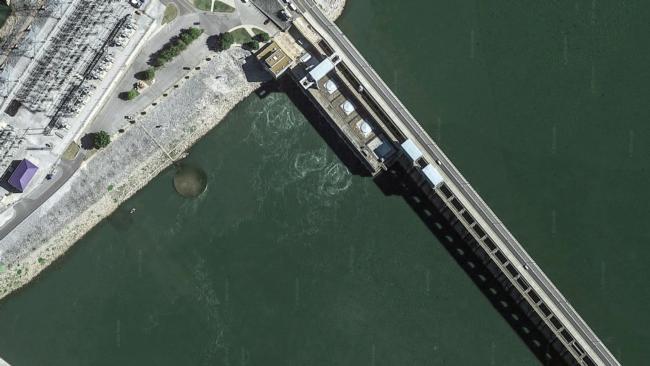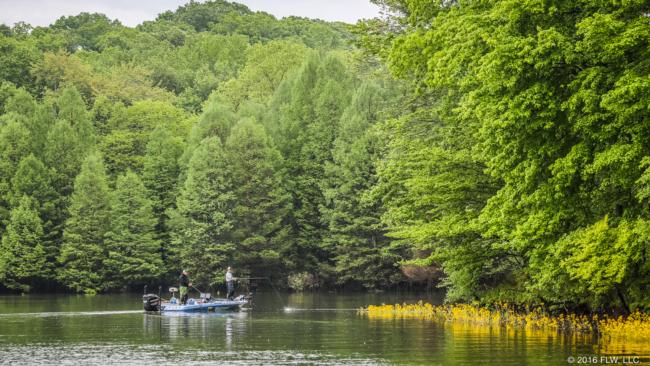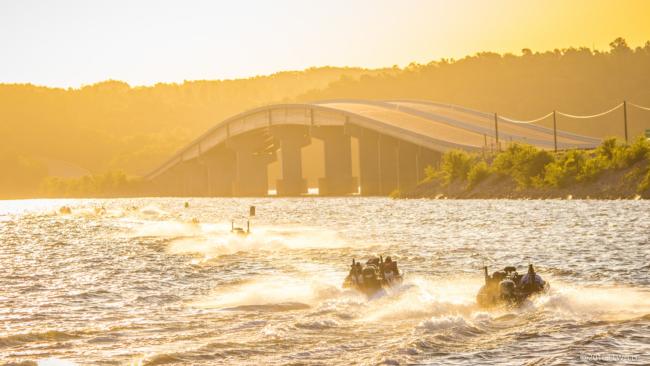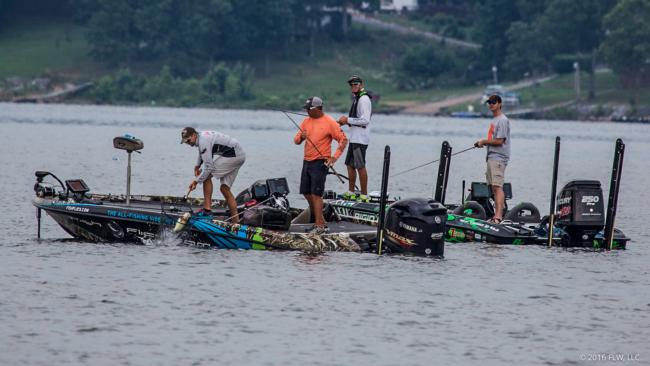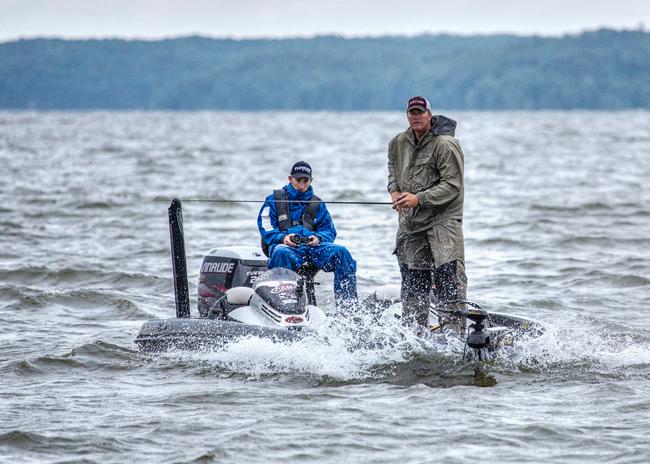5 Factors for Kentucky Lake
Weather, angling pressure are key components of this week’s Tour event
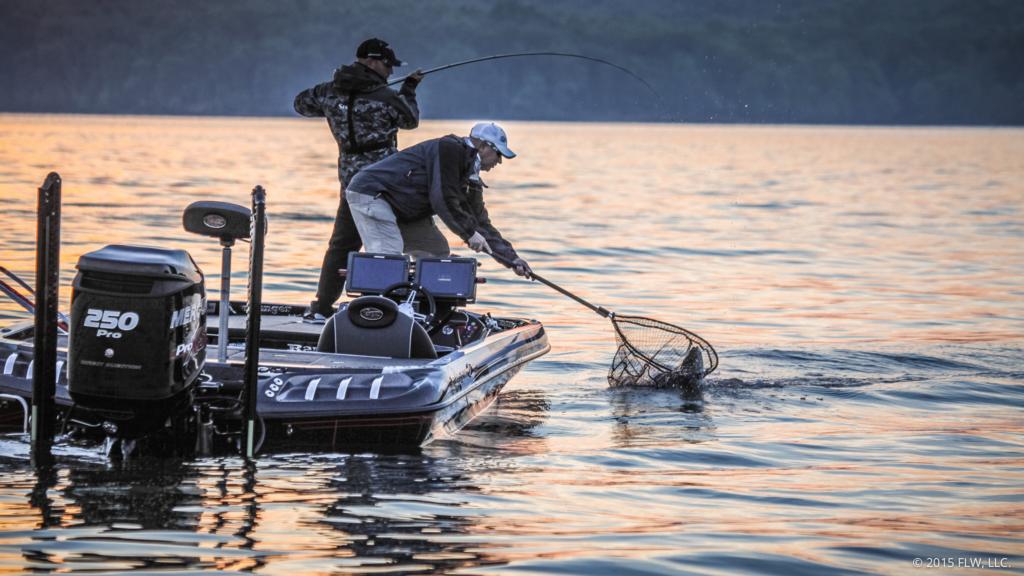
Kentucky Lake is a big lake on the verge of really blowing wide open this week, as wads of bass are starting to group up into mega-schools on deep ledges. Still, most of the regular Tennessee River sticks report that the ledge group-up isn’t quite where it normally is by this point in June. The lake is still in transition, and that will certainly be a factor in this week’s Walmart FLW Tour event, which kicks off on Thursday.
Here are five key factors to watch.
1. Current
Current is the lifeblood of the Tennessee River. When it’s flowing, the fish stack up and feed. When it’s slack, bass spread out and become much harder to catch.
The Tennessee Valley Authority posts lake level and flow conditions on its website, and also via a TVA app, which anglers have probably been glued to all week in practice.
During Sunday and Monday’s practice days, the flows were highest in the afternoon and evening hours. If the schedule stays that way, the late flows won’t do much for the pros who have early boat draws on Thursday and Friday. What’s interesting is that projected average outflows for Tuesday and Wednesday were higher than Monday’s projection – could be more current on the way. Beyond that, it’s somewhat unpredictable, as water usage is based on a variety of factors, including runoff, water level and power generation.
If you’re following along with FLW via the live coverage blog, you might want to periodically check the TVA site and cross-reference current flow to the catch reports. You might see just how important current can be.
2. Water level
Water levels on Kentucky Lake can vary drastically. It’s a drawdown reservoir, meaning that the water level is reduced in the fall and winter months, then raised again during peak recreation and power generation seasons.
On a more short-term scale, the lake can fluctuate day-to-day based on rainfall and operation schedules on the lakes upstream.
Normally by June water level isn’t as much of a factor because the weather usually stabilizes and bass vacate shallow cover for the deeper ledges. In the shallows, they move up and down with the water. Out deep, they tend not to react as much to changes. No biggie in June … normally.
This week, several pros have reported that the shallow bite is better than expected, and it could very well produce some check-earning limits. If the water drops too far, however, that might snooker the shallow bite.
Summer pool is right around 359 feet above sea level. Since 1 a.m. on Saturday, June 4 until 10 p.m. Tuesday, June 6, the water level has fluctuated up and down a couple of times by about 6 inches, with the ups and downs generally in line with the peaks and valleys in the current flow. It has not dropped below 359 feet, nor reached 360. Probably it’s not going to be a major factor, unless it stays at the bottom of its range the entire event or something extreme happens.
You can keep tabs on the water level at the same TVA site previously mentioned.
3. Air and water temperature
Here are two pretty critical factors that are intertwined. The hotter it gets, it seems the more fish stack up on deep ledges. The weather in western Kentucky isn’t far off the norm in terms of average air temperatures, but a mild spring and some recent up-and-down weather swings that included a series of cold fronts have provided enough fluctuation that the fish are running a bit behind.
That’s changing now. Water temperatures on the lake range from the mid-70s up north to a reported low 80s down by New Johnsonville, Tenn.
The forecast for Tuesday through Sunday, according to Weather.com, would be about perfect for a beach vacation: not a lick of rain nor cloud cover, mild winds, and highs ranging from the low 80s to upper 90s. The lows at night, which are also important this time of year, are projected to rise from the upper 50s to low 70s as the week progresses.
All that warm weather should only raise the surface water temperature and push more fish into deep water. In fact, a pro might find some of the transitional secondary ledges empty by the weekend, and the deep community holes filling up.
4. Fishing pressure
Kentucky Lake hosts beaucoup tournaments this time of year because June is one of the best months for fishing, it’s a massive lake (160,000 acres) and the summer vacation season has just begun.
That’s great news for the local economy, but not so great for the anglers on Tour. The ledges receive tremendous fishing pressure even in the middle of the week, and anglers have to be sly in practice to avoid revealing “the juice” to eyeballing non-competitors.
The Kentucky Department of Fish and Wildlife Resources publishes a list of tournaments on its website. The Tour event is the only one listed for this weekend in Kentucky waters. However, at least one major Tennessee tournament is scheduled for June 11 out of Pebble Isle Marina just north of New Johnsonville. That tournament is expected to draw more than 100 boats, and it’ll be a huge factor on Saturday for any Tour pros who planned to fish from Paris to New Johnsonville.
Last weekend, there were several midsized tournaments on the lake. Reportedly, one of those events was won with 28 pounds, and numerous 20-plus limits were reported.
Yeah, the fish have been worked on, but fresh bass are still showing up.
5. Wind
Wind is a major factor for anglers in events launching out of Kentucky Dam Village State Resort Park, where the Tour is launching. Kentucky Lake is wide open in its middle, shallow and straight, and the launch facility is at the extreme northern end of the reservoir. When the wind blows from the north or south beyond about 10 mph sustained, it can stack up some good-sized rollers.
It can get dangerously rough, though rarely in the summertime. Mostly, the wind and waves add time to the trip from the Dam to southern waters, which could limit fishing time.
As of now, the wind is supposed to be very calm all week. That means the entire lake is in play, and anglers should not find themselves limited in navigation. Translation: Expect big limits to come in from just about every inch of the reservoir.
